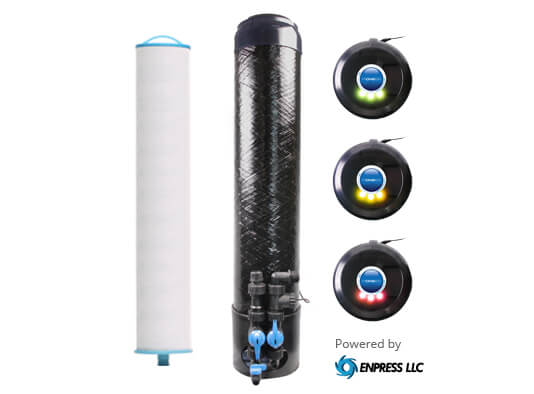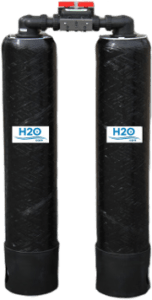What are PFas and how to remove them
This section covers what PFAS are, how they got into water supplies, potential health effects and how we safely remove them. Also see our publication in Water Quality Products Magazine about PFAS in the publications section of our website.
PFAS (Per and Polyfluroalkyl substances) are a group of man-made chemicals that have been manufactured and used in a variety of industries since the 1940s. Some of the more common commercial applications have been for products like Teflon, stain & water–resistant materials, paints, polishes and fire fighting foams (a major source of ground water pollution near airports, military bases and fire fighting training centers). These chemicals are being detected at dangerous levels in drinking water supplies around the country. (For removal methods, see the lower section of this page).

PFOA and PFOS have been the most extensively produced and studied of these chemicals. Both chemicals do not break down and they can accumulate over time. There is evidence that exposure to PFAS can lead to adverse human health effects. As a result, these chemicals are no longer manufactured in the United States, but are still made in other countries and may be contained in imported products. In May, 2016 the EPA issued a health advisory level at 70 parts per trillion for both PFOA and PFOS. If you are on town water, they are required to notify you if this advisory level is exceeded.
HEALTH AFFECTS OF PFAS
There is evidence that exposure to PFAS can lead to adverse health outcomes in humans. If humans or animals ingest it (by eating or drinking food or water), they are absorbed and can accumulate in the body. PFAS stay in the human body for long periods of time. As a result, as people get exposed from different sources over time, the level in their bodies may increase to the point where they suffer from adverse health effects.
Studies indicate that PFOA and PFOS can cause reproductive and developmental, liver and kidney, and immunological effects in laboratory animals. Both chemicals have caused tumors in animal studies. The most consistent findings from human epidemiology studies are increased cholesterol levels among exposed populations, with more limited findings related to infant birth weights and:
- effects on the immune system
- cancer (for PFOA), and
- thyroid hormone disruption (for PFOS).
Note: see https://www.epa.gov/pfas/basic-information-pfas for more detailed information.
Removal of PFAs FROM WATER

Activated Carbon, Point of Entry System
Granular Activated Carbon, which has been tested for the reduction of PFAS/ PFOA according to NSF/ANSI 53 as well as P473, will remove these chemicals at the point of entry into your home or building. The carbon must be exchanged approximately every 100,000 gallons. We have, however, had better experience with the Ion Exchange approach.

Reverse Osmosis, Point of Use System
This membrane based purification technology is typically installed under the kitchen sink, feeding a separate faucet or installed in the basement below running a line up to the faucet. We can also run lines to feed ice makers or refrigerator dispensers. This can remove up to 99% of PFAS in the water. See http://reverse-osmosis-ro-water-purification.
Ion Exchange (Anion Resin)
PFAS Removal System
